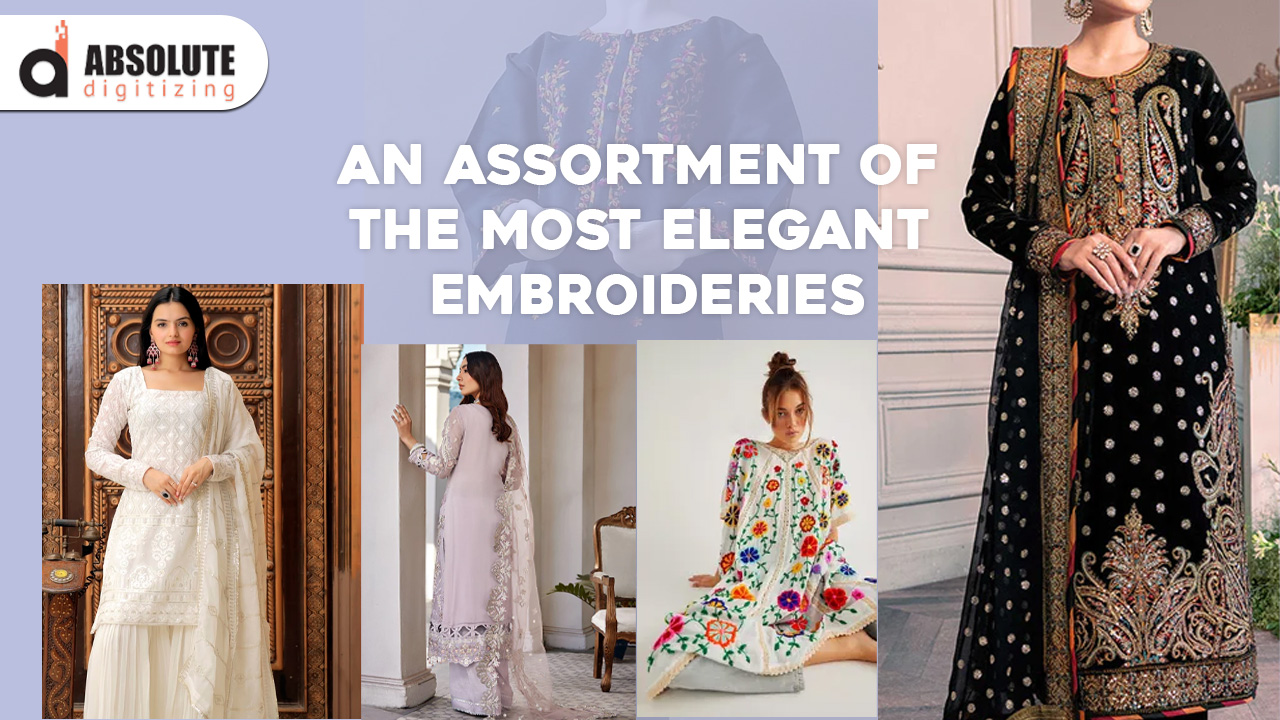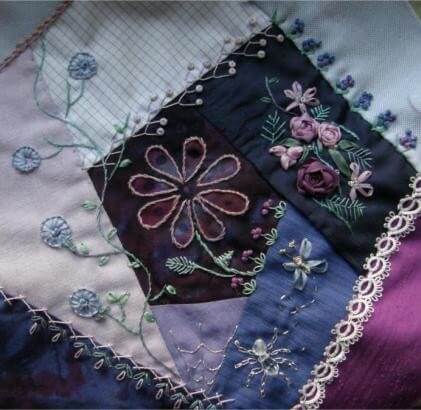The art of embroidery has been around ever since people realized that sewing could have a more decorative purpose in their lives. And in the past, hand-embroidered items were considered a status symbol and something that only the rich could afford. Now a days, industry is dominated by machine embroidery which is backed up by the process of digitizing for embroidery. Machine embroidery is an industry that is dependent on embroidery digitizers but today we will be discussing more about hand embroidery.
Defining the technicalities of this art form is tricky. For, while this art form has its foundation on a number of basic stitches, embroidery artists around the world and throughout time have still managed to develop and establish their own styles and techniques. As for the types of embroidery techniques that exist, that’s a tough list to make: Embroidery types were generally named based on the place that the embroidery technique originated from, or based on the main kind of stitch used in the embroidery. Plus, one kind of embroidery technique often has more than one name by which it is referred to.
However, the difficulty of trying to classify embroidery techniques and stitches take nothing away from the beauty of the art. In fact, embroidery artists prefer to liberally experiment with a combination of different materials, stitches, and techniques when they embroider. So stringently differentiating embroidering techniques is hardly a concern for those interested in this art. If anything, the more adventurous a technique is, the better it is received. And the only real criteria one should follow when it comes to embroidery are beauty and elegance.
Here’s The List of Ornate Embroideries at Your Disposal:
1. Crewel Embroidery
Crewel embroidery is a surface embroidery technique that works with wool threads. Hence, it is best to use a crewel needle when doing crewelwork as the wool threads used here need needles with wide eyes and sharp tips. The fabric medium used for crewel embroidery should be relatively firm and sturdy so that the medium can support the weight of the embroidery (e.g., jute, cotton velvet, etc.).
Crewelwork is a free embroidery technique rather than a counted-thread embroidery technique. An embroidery hoop or frame is necessary for crewel embroidery in order to evenly place the stitches. Embroidery designs in crewelwork are usually full and colorful, with a range of both contemporary and traditional designs that the embroiderer can pick from.
Today, many embroidery artists also use threads other than wool threads in their crewelwork (like silk threads, cotton threads, etc.), and they also employ a variety of different stitches (like chain stitches, satin stitches, French knots, etc.) in their embroidery design.
2. Brazilian Embroidery
Brazilian embroidery’s main distinction is than it uses high-sheen rayon threads that were first popularized for embroidery designs in Brazil. (In fact, this type of embroidery only uses these kinds of rayon threads.) This rayon thread for Brazilian embroidery is special in that it uses a “Z twist” instead of an “S twist.” And consequently, in order to embroider the threads properly, the embroiderer must wrap these rayon threads around the embroidery needle in the opposite direction from the usual when stitching the knots of Brazilian embroidery.
Brazilian embroidery is a surface embroidery technique. Both knotted and cast-on stitches are used in Brazilian embroidery. And flowers are traditionally featured in this floral-based embroidery technique. Creating dimensions and textures is usually the main purpose of this kind of embroidery. Plus, the Brazilian embroidery rayon threads come in shaded colors as well as solid colors, and this adds an extra tinge of distinction to Brazilian embroidery designs.
3. Crazy Quilt Embroidery
The crazy quilt embroidery method first came to be in the Victorian era, around the same time that crazy quilts came into fashion. It was a stitching and embroidery art form that was mostly practiced by noblewomen and ladies who could afford to purchase rich fabric pieces and decorative stitching pieces (like sequins, buttons, etc.).
It is hence necessary to form a distinction between crazy quilts and patchwork quilts: Crazy quilts are a lot like patchwork quilts, except that they are decorative pieces that use various asymmetrical pieces of fabric on purpose. Embroidery designs were then sewn all along the edges of the entire crazy quilt, and sometimes across the edges of the fabric pieces as well as. Blank patches of fabrics also had motifs and designs embroidered into them. And the entire quilt was built with a flannel or muslin foundation underneath (again unlike patchwork quilts, which are pieced together solely from scraps of fabric).
4. Cutwork embroidery
Cutwork embroidery (or cut work embroidery) is a surface embroidery technique. Here, embroidery designs are implemented onto a fabric, and then the empty areas of the fabric (where there is no embroidery) are cut away. Cutwork embroidery is a counted-thread embroidery technique, and it is used with drawn thread work.
Generally, white or ecru color embroidery threads are used for this kind of embroidery (as, for cut work embroidery, it is usually plain white or ecru colored fabrics that are used). Although, as long as the thread matches the color of the fabric it is being embroidered on, other color threads may be used as well if the embroiderer prefers it.
Running stitch and buttonhole stitch are the two main embroidery stitches that are used in cutwork embroidery. And the fabric medium used for this embroidery method is usually lawn, linen, or cotton. For hand-embroidery, the design is first embroidered into the fabric, and then the empty areas of the fabric are cut away.
So, this was the first installment in the series. Wait until we get to you some more of this cool stuff in the next installment soon to be published!






